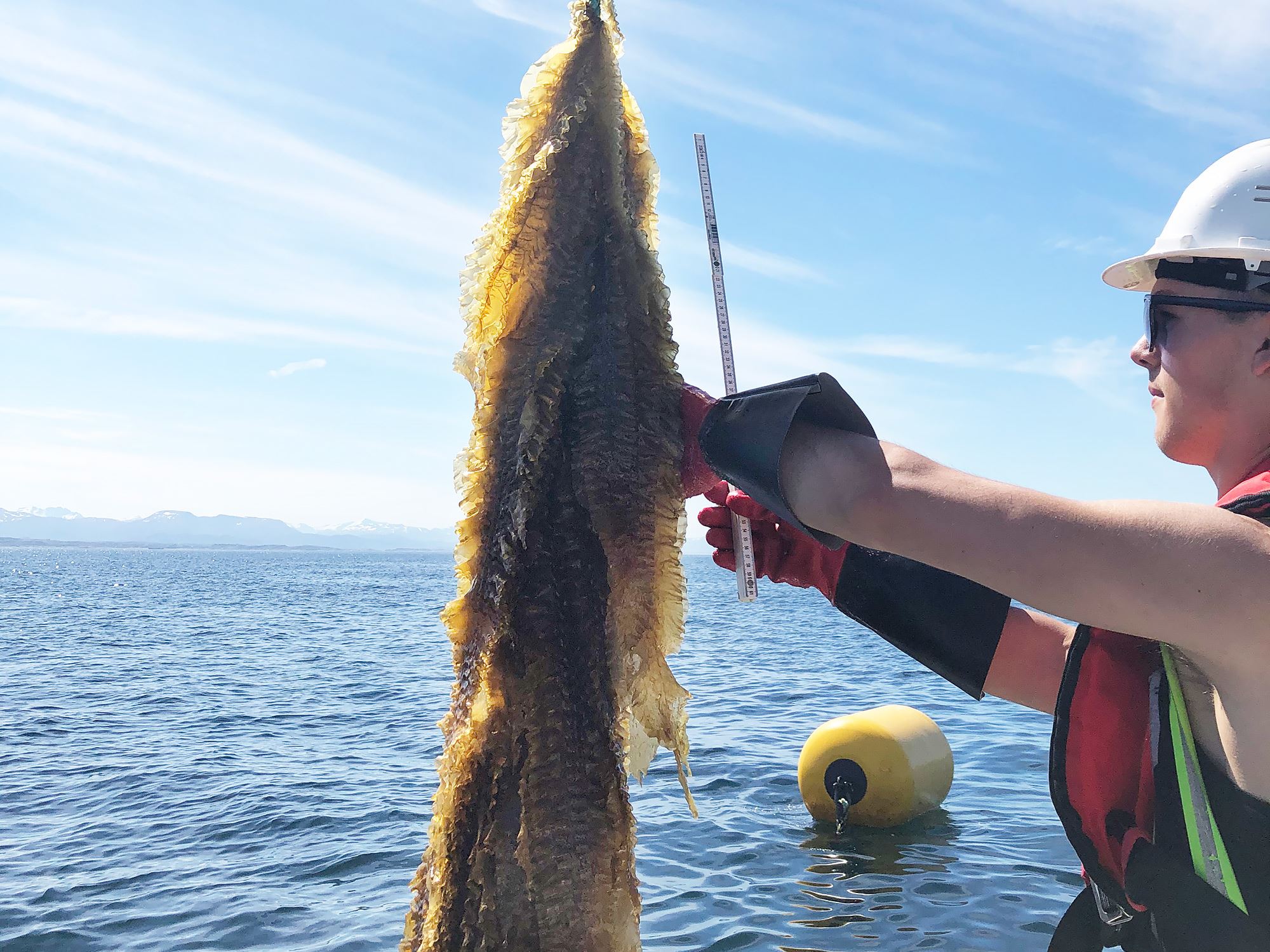
Norwegian company to research seaweeds for purpose of absorbing CO2
SINTEF launches a global climate fund during the climate summit in Glasgow – for research on solutions that can draw greenhouse gases out of the atmosphere and the ocean. The research field is severely underfunded, but will be necessary to achieve the climate goals. SINTEF itself enters the fund with NOK 21 million and opens up for external donors.
The background is that even sharp cuts in man-made emissions are not enough to limit global warming to one and a half degrees. We humans have already emitted so much greenhouse gases that, according to all realistic scenarios, we also have to “suck” large amounts of added CO 2 out of the atmosphere and the ocean. That is: take these out of nature’s cycle and then store them permanently.

2 and then is buried on the seabed – this is one of the future possibilities SINTEF is currently studying.
Here, Marius Andersen, an apprentice in SINTEF, has harvested sugar kelp from a cultivation experiment at Grip outside Kristiansund.
Photo: SINTEF
“Cemeteries” for kelp
The use of cultivated kelp plants as climate helpers is part of three of the five projects that are all underway under the auspices of the fund.
Like other seaweeds, kelp absorbs CO 2 that is dissolved in seawater. If these CO 2 molecules are to be removed from nature’s cycle, they must be prevented from being released again by the kelp rotting, being eaten or burned uncontrollably. In three of the five started-up projects,
SINTEF is therefore looking at the possibilities of creating climate-friendly “cemeteries” for grown kelp. As by lowering kelp to great depths, financed by climate quotas – as well as converting kelp plants to charcoal-like biochar. The coal can be buried on land, perhaps in fields and meadows, where it remains without emitting CO 2. The biochar can probably also be used to improve arable land.
Information Source: Read More
Oil and gas, press , | Energy, Climate, Renewable, Wind, Biomass, Sustainability, Oil Price, LPG, Solar

